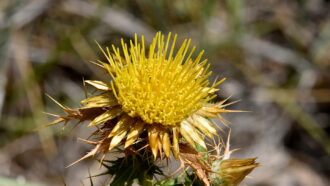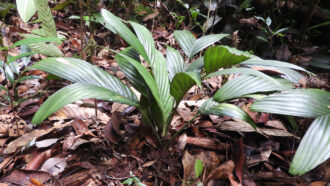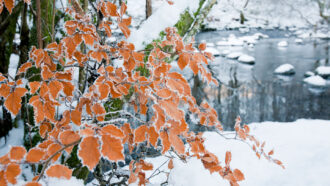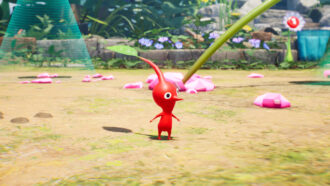Less brilliant flowers still keep bees coming back
Bumblebees prefer petals that have a bit less shimmer
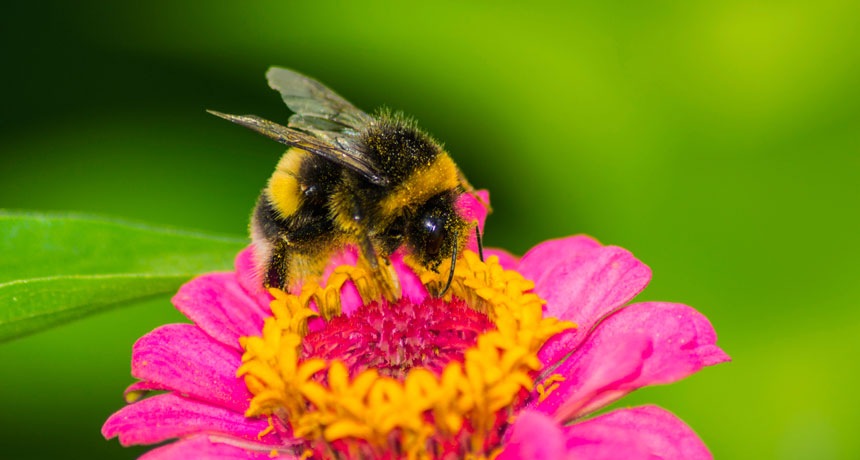
Bumblebees prefer flower petals that aren’t too shimmery, a new study shows.
vinkirill/istockphoto
Spring brings with it the sweet fragrance of fresh flowers and the buzzing of bumblebees. Those pollinators may seem to fly aimlessly as they search for the sugary liquid called nectar. But their flight plans actually do have a pattern. Flowers act as the insects’ air-traffic controllers. And new research shows that bees prefer flowers that aren’t too flashy.
Flowers give bees clues about how much food a plant has to offer. Those clues can be in the petals’ color, how much they shimmer or even in their electrical charge. All of these characteristics send signals to the bees, telling them whether to land or not.
Color seems to play a major role in which flowers a bee will choose.They stop by different flowers and see what they have to offer. The insects keep track of the color of flowers that are especially rich in nectar. They then visit more flowers of that color, says Lars Chittka. He’s a biologist who studies bees at the Queen Mary University of London in England.
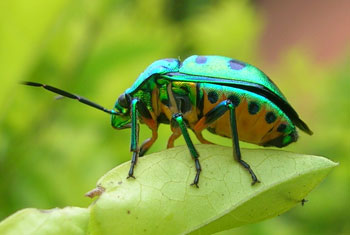
In 2009, Glover and her colleagues showed that even when petals look shimmery, bees can still tell which flowers likely hold food. But she and others noticed something odd about iridescence. It’s not quite as flashy in plants as in other life forms, Glover says. The backs of jewel beetles or the wings of certain butterflies, for instance, shine and shimmer a lot more.
“This is not because plants can’t do it,” Chittka notes. “Some fruits are quite strongly iridescent.” So plants have the ability to shimmer strongly, but flowers keep it in check.
Chittka, Glover and others started to think that the strength of a flower’s iridescence might be related to how bees perceive the petals. Plants and their pollinators have spent millions of years evolving together. Over that time, flowers have become more attuned to what insects might like.
The researchers tested their hypothesis in the lab. They trained a group of bees to associate fake purple flowers with getting more nectar. Then the team tested the bees. They added non-shimmery fake flowers with purple-blue and purple-red hues to the bees’ flight path. The bees passed the test, ignoring flowers that weren’t perfectly purple.
A second group of bees was trained to drink from fully flashy, “perfectly iridescent” purple flowers. But when the team added perfectly iridescent flowers in different hues, the insects checked them for nectar too.
“The bees got a little confused when flowers were perfectly iridescent,” Chittka says.
A third group of bees, however, had no problem finding the right flowers when the petals had only a little bit of bling. These bees were trained to drink from “imperfectly iridescent” purple flowers. When the team added imperfectly iridescent flowers in different hues, the bees weren’t confused at all. “They could still clearly identify the purple flowers as the good ones,” Glover says. That means imperfect iridescence is best for bees.
The team shared its new findings in the March 21 Current Biology.
“At first glance, it is very surprising that imperfect iridescence appears to be a better signal for bees,” says Klaus Lunau. A biologist at the University of Düsseldorf in Germany, he was not involved in the study. Animals can usually detect a more vibrant signal more easily, he says. But, he notes, since perfect iridescence can confuse bees, it makes sense that flowers have evolved a little less flashiness.
The next step in this research, Glover says, is figuring out how plants build this perfectly tuned, imperfect iridescence into their petals.
Power Words
(for more about Power Words, click here)
biology The study of living things. The scientists who study them are known as biologists.
electric charge The physical property responsible for electric force; it can be negative or positive.
evolve (adj. evolving) To change gradually over generations, or a long period of time. In living organisms, the evolution usually involves random changes to genes that will then be passed along to an individual’s offspring. These can lead to new traits, such as altered coloration, new susceptibility to disease or protection from it, or different shaped features (such as legs, antennae, toes or internal organs). Nonliving things may also be described as evolving if they change over time. For instance, the miniaturization of computers is sometimes described as these devices evolving to smaller, more complex devices.
insect A type of arthropod that as an adult will have six segmented legs and three body parts: a head, thorax and abdomen. There are hundreds of thousands of insects, which include bees, beetles, flies and moths.
hypothesis A proposed explanation for a phenomenon. In science, a hypothesis is an idea that must be rigorously tested before it is accepted or rejected.
iridescence The property of certain surfaces that appear to change color as the angle of view or the angle of illumination changes.
nectar A sugary fluid secreted by plants, especially within flowers. It encourages pollination by insects and other animals. It is collected by bees to make into honey.
pollinate To transport male reproductive cells — pollen — to female parts of a flower. This allows fertilization, the first step in plant reproduction.
pollinator Something that carries pollen, a plant’s male reproductive cells, to the female parts of a flower, allowing fertilization. Many pollinators are insects such as bees.

